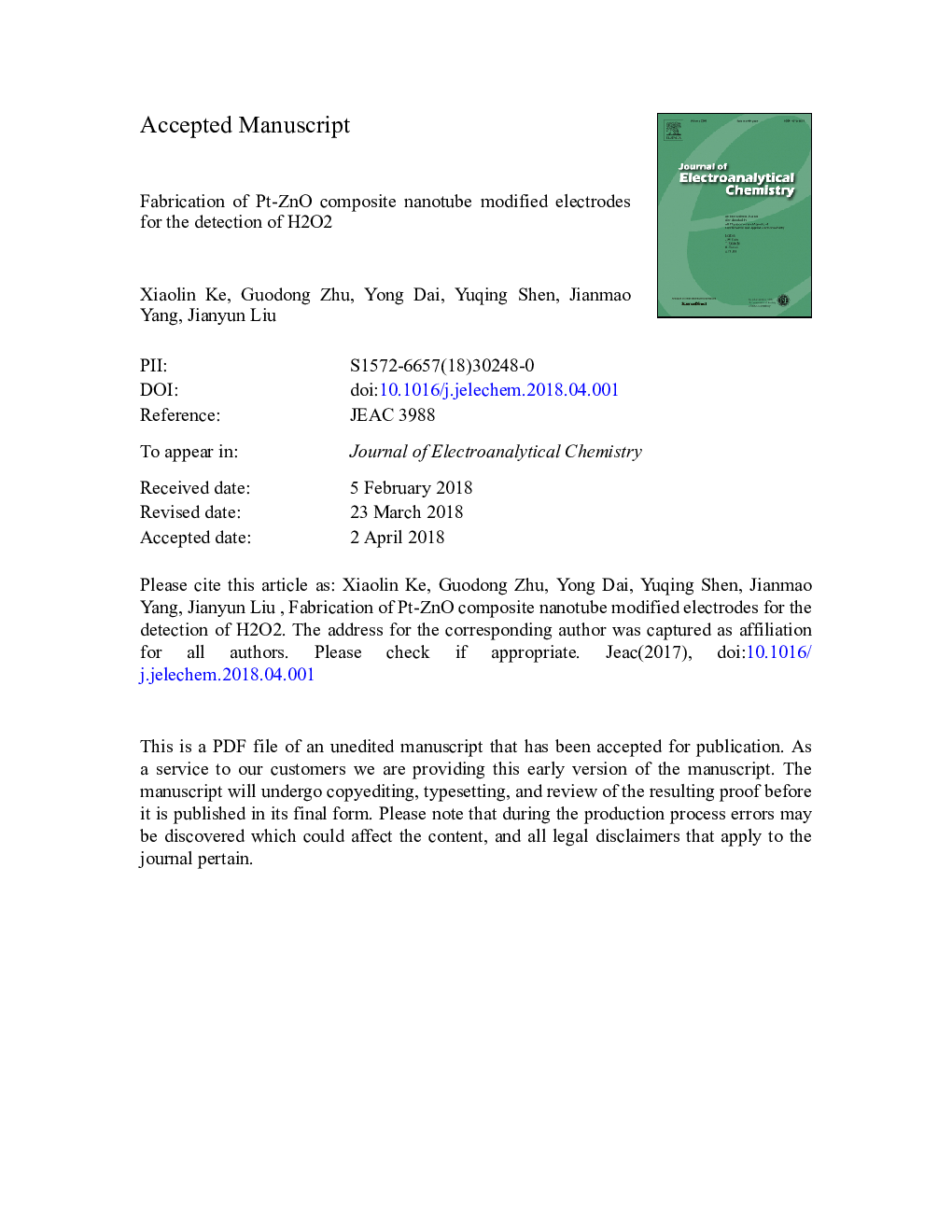| Article ID | Journal | Published Year | Pages | File Type |
|---|---|---|---|---|
| 6661870 | Journal of Electroanalytical Chemistry | 2018 | 22 Pages |
Abstract
Pt-ZnO nanotubes were synthesized by one-pot electrospinning polyacrylonitrile (PAN) and polyvinyl pyrrolidone (PVP) bipolymer in the presence of zinc acetate and chloroplatinic acid, followed by the calcination of nanofibers. The tubular structure of Pt-ZnO composite and the homogeneous distribution of Pt nanoparticles were confirmed by scanning electron microscopy (SEM) and transmission electron microscopy (TEM). X-ray diffraction (XRD) characterization demonstrates that ZnO exhibits the hexagonal wurtzite structure, while Pt particles exist mainly in the form of cubic Pt. Zero valence Pt is confirmed by X-ray photo spectroscopy (XPS). Pt-ZnO drop-coated glassy carbon electrode (Pt-ZnO/GCE) was employed for the measurement of H2O2. The Pt/Zn molar ratio affects the catalytic activity to H2O2 reduction. Pt-ZnO/GCE with the Pt/Zn ratio of 1:3 displayed the best catalytic performance, and a corresponding linear relationship was obtained with H2O2 concentrations ranging from 2â¯Ãâ¯10â5â¯M to 5â¯Ãâ¯10â3â¯M (R2â¯=â¯0.9969). The limit of detection is 1.5â¯Ãâ¯10â6â¯M (S/Nâ¯â¥â¯3). The electrospun-based Pt-ZnO nanotubes have a great potential for electrochemical sensing.
Keywords
Related Topics
Physical Sciences and Engineering
Chemical Engineering
Chemical Engineering (General)
Authors
Xiaolin Ke, Guodong Zhu, Yong Dai, Yuqing Shen, Jianmao Yang, Jianyun Liu,
